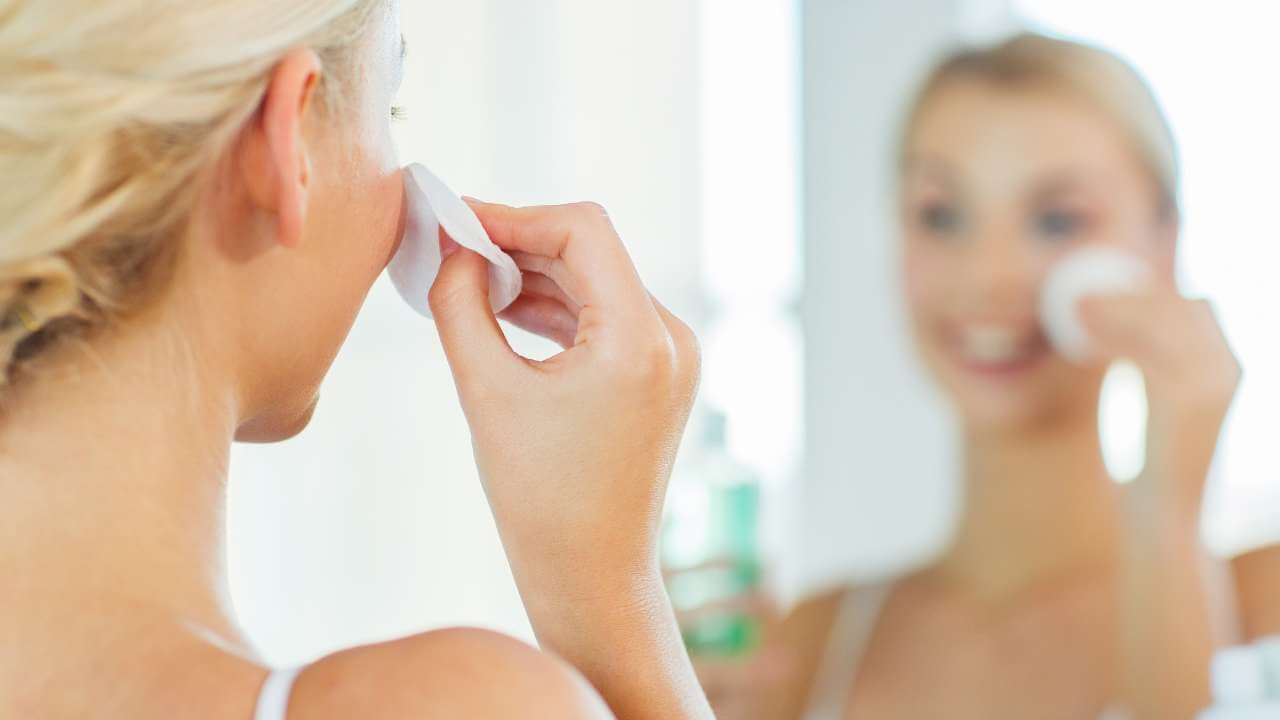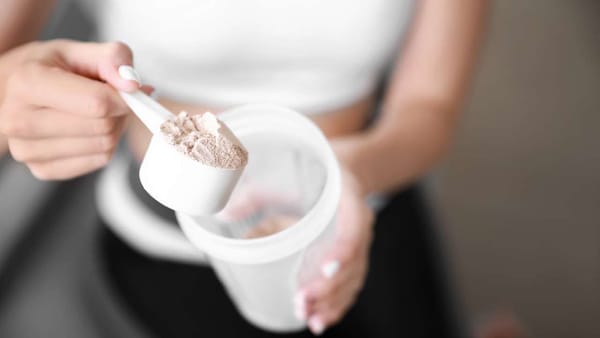Do acne breakouts make you feel blue?
Say goodbye to acne with witch hazel! This natural skin treatment has been around for centuries, and its gentle ingredients bring relief from inflammation and redness. It will help make your skin clearer without the harsh side effects that harsher acne treatments can cause.
Plus, our special guide on witch hazel for acne will tell you how to use it for maximum impact on your skin.
Your skin should be healthy and glowing—not suffering from blemishes, pimples, and dry skin irritation.
So don't give up hope on having clear skin just yet - try this age-old acne self-care remedy instead!
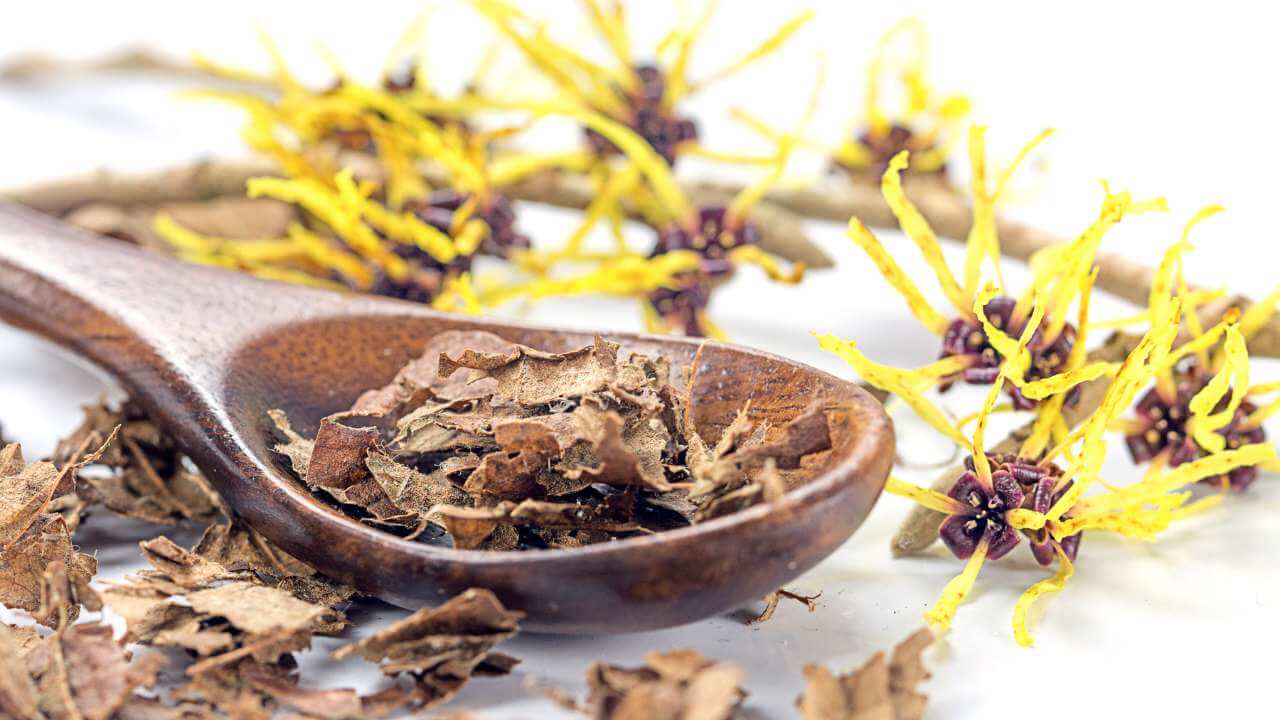
What is Witch Hazel?
Hamamelis virginiana, or the North American witch hazel shrub, is the source of one of nature's most versatile gifts: Witch Hazel.
Derived from the leaves, bark, and twigs of its plant source, this natural liquid extract is fortified with antioxidant compounds that make it both nourishing and astringent.(1)
Witch hazel is a miracle ingredient for those suffering from irritated skin. Not only does it provide soothing relief, but its natural properties gently remove excess oil and sebum from the surface of your skin - making it an ideal choice for oily skin and acne-prone skin.
Benefits of Witch Hazel
Witch hazel toners are a powerful solution when applied directly to the skin, as they can assist in soothing irritation, wounds, and inflammation. Acne, inflammatory conditions, and sunburns are some of the most common uses for this product.(2)
For Acne
Witch hazel's astringent properties make it a possible solution for non-inflammatory acne, like blackheads and whiteheads. The active tannins in witch hazel are thought to contribute to this outcome by drying out the blemishes; these plant-based compounds also deliver antioxidant benefits.(3)
Witch hazel toner and astringents offer a mild solution to reduce the amount of oils on the skin as well as decrease redness for those with acne.
So if you're looking for an alternative treatment option for your mildest of breakouts, consider giving witch hazel for acne a try!
Inflammatory Skin Conditions
Not only can witch hazel potentially benefit other inflammatory skin conditions such as psoriasis and eczema, but it may also reduce the redness caused by these itchy skin rashes.(4)
By treating the underlying inflammation in the skin, there is a chance that fewer flare-ups will occur in their place. This is why witch hazel can also be a helpful remedy for those pesky under-eye bags.
For Sunburns
Putting aside the traditional use of witch hazel as a sunburn remedy, it can also be used to address minor skin burns due to exposure to chemicals or razor burn from shaving. Witch hazel is not only safe for these types of irritations but may even work better than other popular options!
Witch hazel can be used to relieve the pain of skin burns. To do so, saturate a soft cloth or paper towel with witch hazel and lightly press it against the burned area. Avoid rubbing it in as this may cause more irritation.
Other Benefits of Witch Hazel
Witch hazel has many other healing benefits and can be used to soothe an assortment of conditions, such as blisters, bug bites, dandruff, eczema, or a sore scalp. People also frequently use it for relief from poison ivy stings and rashes while some even find comfort in its anti-inflammatory properties when dealing with hemorrhoids.
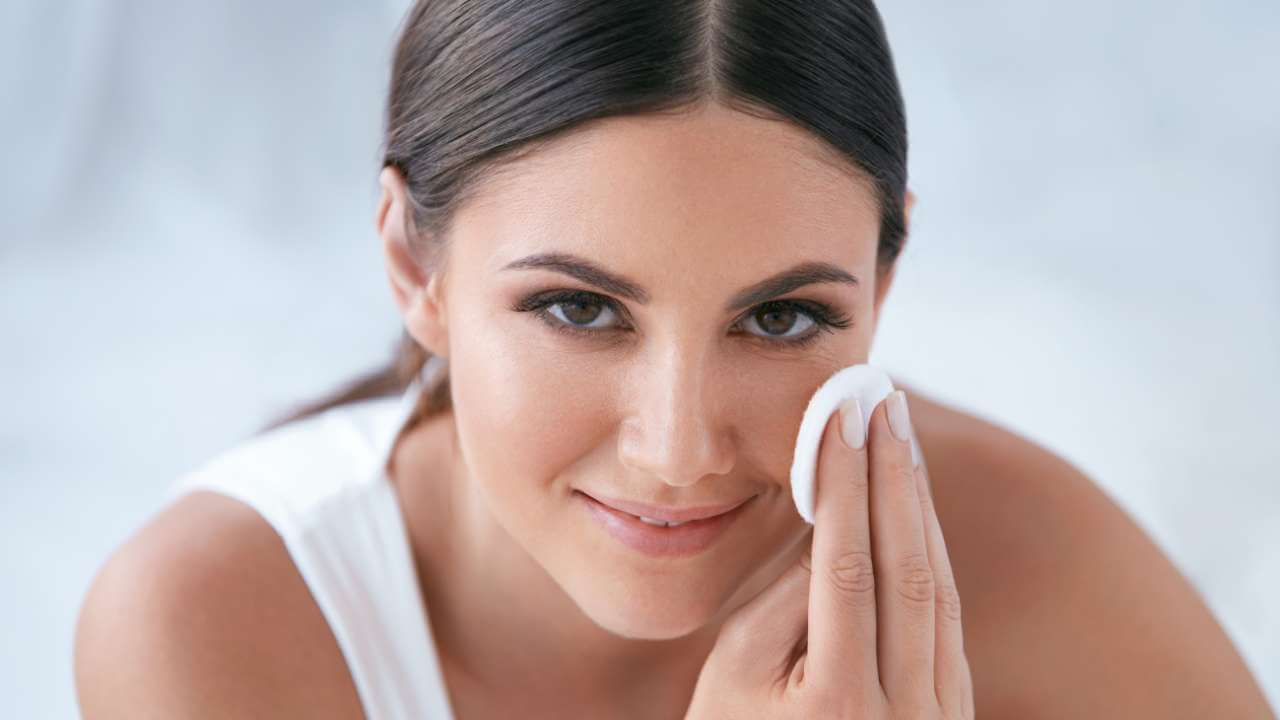
How to Use Witch Hazel for Acne?
Witch hazel extract has the potential to be blended with either water or alcohol, forming witch hazel water and distilled witch hazel extract respectively.
This combination includes polyphenols and tannins which act as a natural astringent by getting rid of excess oil on the skin's surface. Not only that but it can also help reduce shine and control acne breakouts too!(5)
Several topical acne treatments include this invaluable ingredient - proving how potent its effects are!
We have a wealth of information about the best cleansers and antibacterial body washes available, as well as expert advice on how to treat acne-prone skin. If you're looking for the best acne body wash to keep your skin clear and calm, look no further than HealthMention!
Conduct a Skin Patch Test
Before you apply witch hazel to your face, test the product on a small area of the skin to determine if any reactions occur.
To avoid irritation, don't apply witch hazel in combination with other ingredients such as alpha hydroxy acids (like salicylic acid) before seeing how your skin responds.
Alcohol-free Witch Hazel Products
An alcohol-free witch hazel product is the wisest choice for your skin. Too much alcohol content can cause dry skin and damage the skin's protective barrier which increases irritation risk, not to mention triggering more breakouts.
Potential Side Effects of Witch Hazel
Witch hazel is usually considered safe to use externally on the skin for most adults, although an issue of minor irritation might arise in some cases.
Did you know that ingesting witch hazel may lead to stomach upset and liver problems?
In the same way that using salicylic acid or benzoyl peroxide too often can be damaging to your skin, refrain from overusing witch hazel as well.
Rest assured that witch hazel contains only minuscule levels of a cancer-causing chemical (safrole) so there's nothing to fear! However, for this reason, it is best to avoid using it if you are pregnant or nursing.
Did We Mention...
Witch Hazel for Pimples FAQs?
After delving into the advantages, side effects, and usage of witch hazel in treating acne, we understand that you may still have some questions. That's why we've provided a list of frequently asked questions that should help clear up any confusion.
Here are all the questions — along with answers — you need to know to decide if witch hazel can work for your needs.
Q: Is Witch Hazel Good for Pimples?
Yes, witch hazel can be a beneficial treatment option for pimples and other skin blemishes. It has astringent, anti-inflammatory, and antiseptic properties that can help to reduce the appearance of acne and other blemishes. Witch hazel can also help remove excess oil from the skin, which can help prevent future breakouts.
Q: Is Witch Hazel Safe for Sensitive Skin?
Yes, witch hazel is generally considered safe for sensitive skin. However, it's important to do a patch test of the product on a small area of your skin first to ensure that you don't experience any adverse reactions.
Q: Are there Any Alternatives to Witch Hazel for Acne?
If you have oily skin and are looking for an effective way to manage acne, salicylic acid or glycolic acid cleansers may be best. These ingredients can effectively exfoliate the skin, diminishing dirt accumulation and dead skin cells on the surface of your face. Conversely, if your skin is drier then utilizing products that contain either hyaluronic acid or glycerin could prove beneficial instead of relying on witch hazel.
Some natural ingredients like aloe vera, tea tree oil, and lemon juice can also be utilized as alternatives to witch hazel.
Q: Does Witch Hazel Make Acne Worse?
Too much use of witch hazel can be an issue, as it may lead to dry skin and irritation. To compensate for this loss in moisture, the affected skin areas often produce more excess oil than normal - a problem that leads to clogged pores and breakouts.
As such, we suggest using small quantities of witch hazel on your skin whenever possible.
Q: Can Witch Hazel Diminish the Appearance of Acne Scars?
While there is no scientific proof that witch hazel can reduce the visibility of acne scars, its calming and anti-inflammatory properties may help relax redness and irritation caused by breakouts.
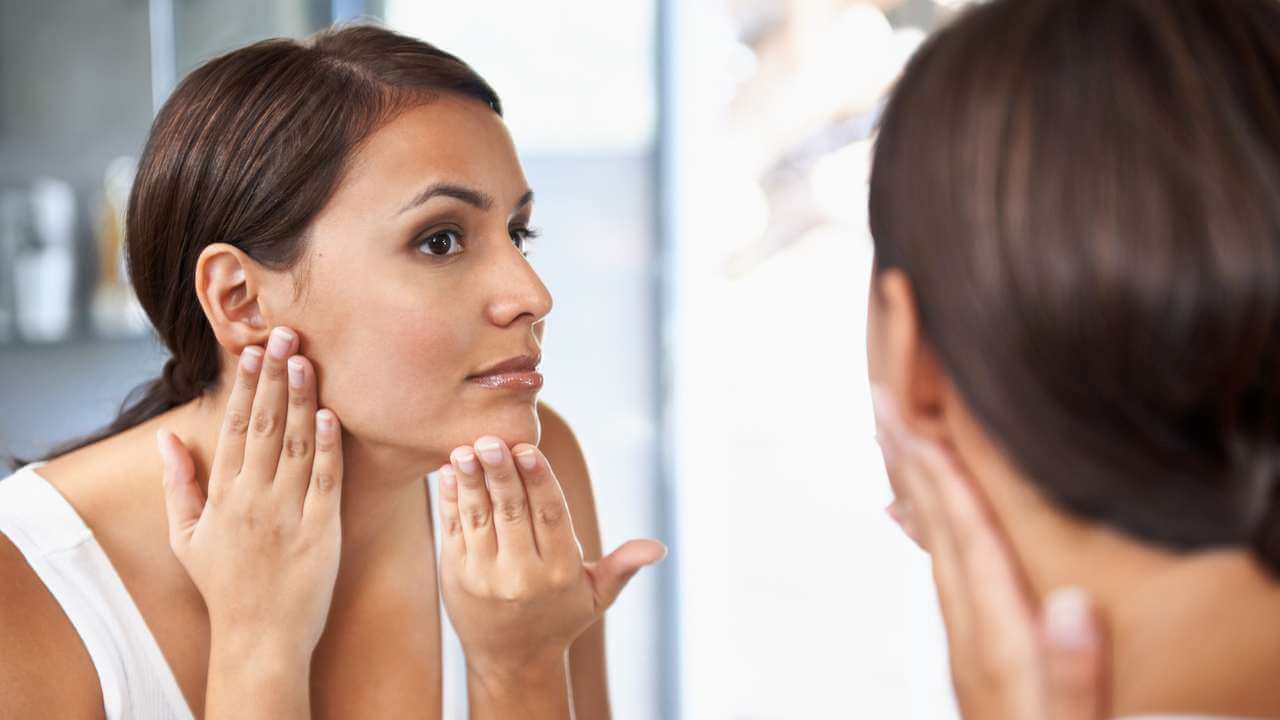
The Final Mention
Witch hazel has become a go-to treatment for acne due to its astringent properties which help dry out breakouts, ultimately reducing the visibility of blemishes. It also has antioxidant and antibacterial properties, which can help reduce inflammation in sensitive skin.
Additionally, witch hazel is generally accepted to be safe for use on all skin types, including oily skin or acne-prone skin. It's important to keep in mind that even though witch hazel may offer some relief from acne symptoms, it should not be used as a sole treatment. Consult a dermatologist or healthcare professional if you have any concerns about using witch hazel for your acne treatment. Doing so can help you find the right course of action to achieve clear skin.
Please know that there is no one-size-fits-all solution when it comes to treating acne. Finding the right treatment for you requires a combination of different solutions, such as dietary changes & lifestyle adjustments. If excess oil and skin irritation is an issue, then consider witch hazel as a potential addition to your acne treatment and skin care routine.
We hope this article has provided helpful information about the benefits and uses of witch hazel in acne treatment. If you've ever used witch hazel to battle acne, we'd love to hear about your experience in the comments section. Please share how effective it has been for you! We can't wait to read what you think.
✅ 5 Sources
HealthMention only uses sources from authoritative and reliable resources, such as peer-reviewed studies, to strengthen the accuracy of our content.
- National Center for Complementary and Integrative Health. Antioxidants: In Depth. NCCIH. Published November 2013. https://www.nccih.nih.gov/health/antioxidants-in-depth
- Piazza S, Martinelli G, Vrhovsek U, et al. Anti-Inflammatory and Anti-Acne Effects of Hamamelis virginiana Bark in Human Keratinocytes. Antioxidants. 2022;11(6). doi:https://doi.org/10.3390/antiox11061119
- Nasri H, Bahmani M, Shahinfard N, Moradi Nafchi A, Saberianpour S, Rafieian Kopaei M. Medicinal Plants for the Treatment of Acne Vulgaris: A Review of Recent Evidences. Jundishapur Journal of Microbiology. 2015;8(11). doi:https://doi.org/10.5812/jjm.25580
- Shenefelt PD. Herbal Treatment for Dermatologic Disorders. PubMed. Published 2011. https://www.ncbi.nlm.nih.gov/books/NBK92761/
- Rasooly R, Molnar A, Do P, et al. Witch Hazel Significantly Improves the Efficacy of Commercially Available Teat Dips. Pathogens. 2020;9(2):92. doi:https://doi.org/10.3390/pathogens9020092



